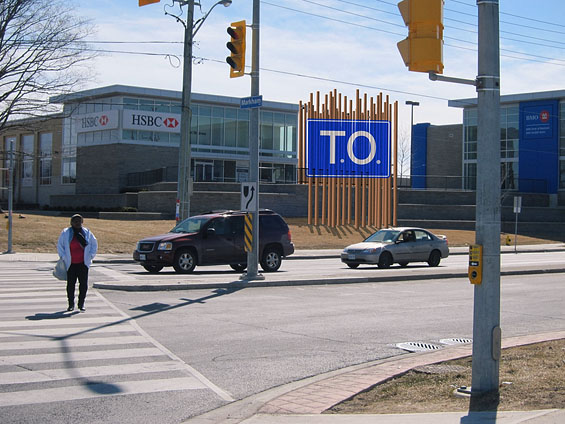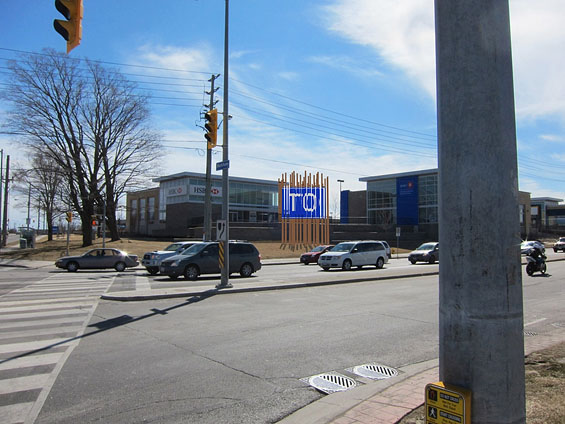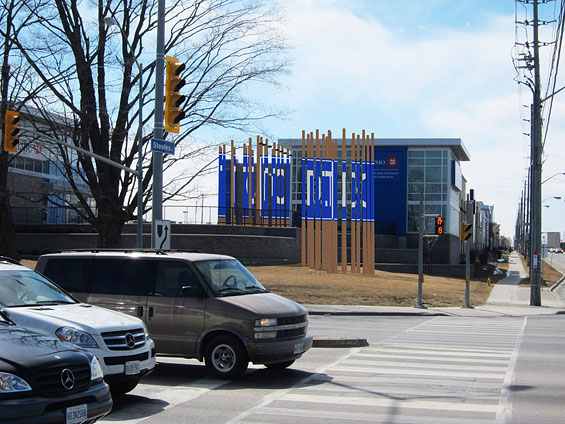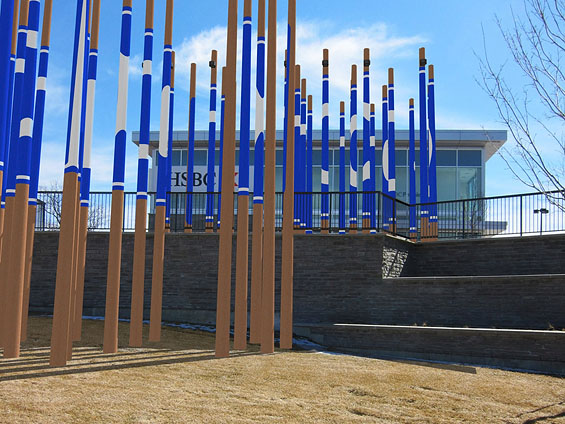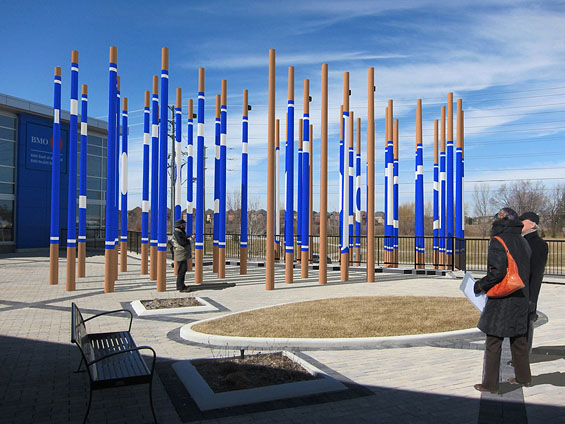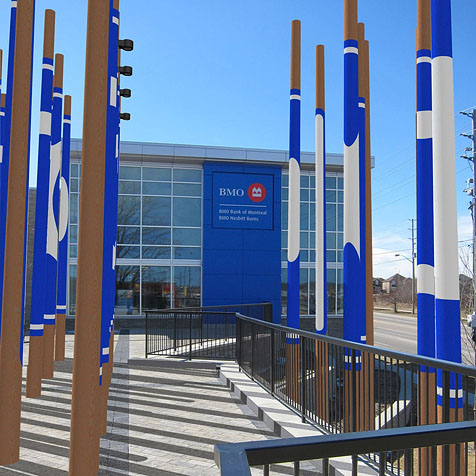Toronto: Scene and Unseen, 2011
Public Art Proposal in collaboration
with Nathanael Gray Architect
wooden utility poles, aluminum, reflective road sign material
Toronto: Scene and Unseen proposed the use of 44 wooden utility poles wrapped with industrial reflective signage material to construct a playful and interactive marker for the Toronto/Markham border. Working with components of city infrastructure that are so ubiquitous that they are almost unseen, this work endeavoured to reinvent our relationship to them, elevating their status in our midst.
When viewed from a small area of proximity to the sculpture at the northwest corner of the intersection, an image of a standard blue and white highway sign reading “T.O.” would be clearly identified on the poles. From anywhere else on the site, however, the poles would appear entirely abstract. Reflecting on conditions of distance and immersion, Toronto; Scene and Unseen spoke to the complexities of identity and the interconnectedness of subject and object.
I see from only one point but in my existence I am seen from all sides. Maurice Merleau-Ponty
